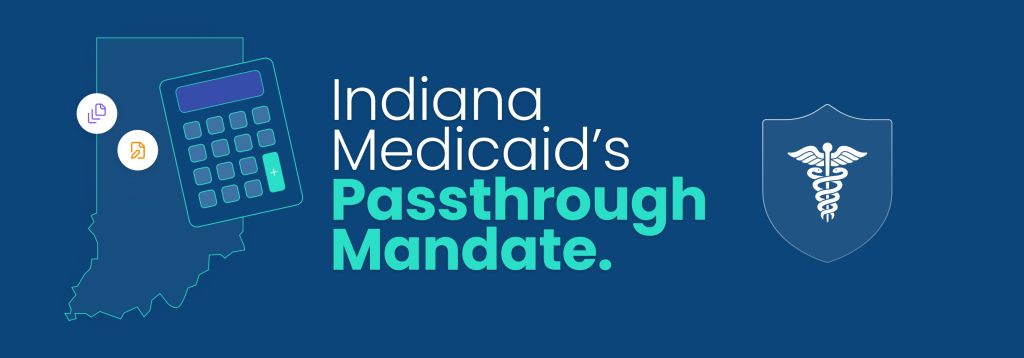Home care, one of the most promising and rapidly growing sectors in the United States, currently holds the second position in terms of total job openings across all occupations, according to a report by PHI.
In the past few years, there has been a huge shortage of caregivers with agencies struggling to recruit and retain caregivers which has ultimately affected their growth. According to the 2023 HCP Benchmarking report, 75.5% of providers turned down cases at some point during 2022 due to the caregiver shortage.
In this article, we cover how working with Third-Party Payers (TPPs) can address these issues while simultaneously driving business growth.
What Are Third-Party Payers?
When we refer to TPPs we mean anything that isn’t Private Pay, such as Veterans Affairs (VA), Medicaid, Workers' Compensation, Medicare Advantage, etc.
If you’d like a more in-depth look at all the different payer lines available check out this article: Exploring The Diverse Payer Lines Available For Home Care
Benefits of Third-Party Payers for Retaining Caregivers
There are a number of reasons why TPPs help retain caregivers such as higher rates, increased hours, fulfilling work, and training opportunities.
Higher Rates = Higher Pay
Studies indicate that 50% of direct care workers leave their jobs within the initial year, due to low wages. Offering higher wages is a crucial strategy that not only ensures a more competitive income for caregivers but also serves as a powerful tool for retaining them.
Many providers are afraid of working with TPPs because they believe the rates are low, but this isn’t always the case. In many instances, VA rates are better than private rates, and Medicaid has good rates depending on the state you’re in.
Some agencies use a targeted approach by aligning specific payer lines with caregiver retention strategies. For instance, one agency chose to exclusively assign their most experienced caregivers to Veterans. This strategy serves a dual purpose: it ensures that only highly skilled caregivers are responsible for Veterans, thereby enhancing the quality of care.
Moreover, being assigned to Veteran care can come with higher pay rates, acting as a financial incentive for caregivers to stay with the organization long-term. This not only brings stability to the caregiving workforce but also has the potential to increase referrals, as the VA may be impressed by the dedicated, experienced care their Veterans are receiving.
View your local VA reimbursement rates here.
Higher Volume of Work
When caregivers are job hunting, one big thing they look for is the promise of full-time work. No one wants to be left guessing how many hours they'll get each week. Inconsistent or limited hours can often dissuade applicants. Fortunately, Medicaid regularly approves a substantial number of care hours, allowing agencies to offer more stable, full-time positions.
When compared to other funding sources, Medicaid's generous hour allocations stand out. It is wise to diversify your funding sources for a more stable work schedule. For instance, if there are gaps in a caregiver's schedule, these might be effectively filled by bringing in VA clients, who generally receive between 16 and 20 authorized hours per week.
By mixing and matching various payer sources like this, agencies can offer caregivers more consistent work schedules, and ensure uninterrupted and quality care for all clients.
Meaningful Work
Many caregivers want to make a difference in their client’s lives and thus look for meaningful positions where they can add value.
Caregivers, when exclusively assigned to Veterans through third-party payers, are not just providing routine assistance; they are delivering valuable care to those who have served their country. The same applies to serving low-income individuals through Medicaid.
This unique approach adds a deep sense of purpose to their work, as it involves meeting the unique needs and challenges faced by these clients.
Training and Growth Opportunities
One common concern among caregivers is the lack of opportunities for career advancement. However, diversifying their work across different payer lines and client types—like VA and Medicaid—provides them with a valuable range of experience that enriches their resumes.
Complexity Around Credentialing and Billing Processes
One of the main challenges care agencies face when dealing with third-party payers is navigating the strict regulations that govern billing and payment. Each payer has its own set of rules and requirements, making it crucial for agencies to stay up-to-date with the latest guidelines to ensure accurate billing and reimbursement.
Failure to comply with these regulations can result in denied claims and delayed payments.
Even though there are complexities that come with working with the VA and Medicaid, the benefits greatly outweigh the challenges, and it improves the industry as a whole.
The TPP Advantage
Third-party payers are a great solution to the challenges of caregiver recruitment and retention in the home care space. By providing higher rates, increased hours, a sense of purpose, and ongoing training, TPPs empower caregivers and enhance the quality of care.










